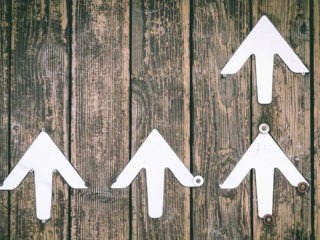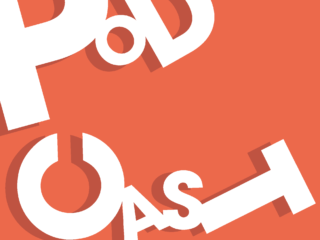Like everyone on literally the entire planet, our lives changed this year. In the early days of the pandemic, we talked about how we’ve adjusted our development and production process. Soon after that post, George Floyd was killed outside a small store in Minneapolis. Then our priorities shifted toward more meaningful action to make society a tiny bit more equitable. As our clients have made similar shifts, we’ve collaborated with them to change the way we do work that informs, is useful, and can even push society in a positive direction.
I spoke to editorial and strategy team members Alyssa Abkowitz and Rachel Henry and designers Justin Durkin and Delilah Zak about how work has changed for us this year.
Mimi: How has the way you worked with clients changed this year—or since the beginning of the pandemic?
Alyssa: So much of this year has been marked by the need to be agile and meet people where they are. Some companies—and their marketing budgets—have had to drastically downsize, almost overnight, after seeing original 2020 plans evaporate. Others have experienced a massive surge in need for content and workforce capacity, requiring them to scale up at a rapid pace. The trickiest part has been trying to understand how to work with moving goalposts.
Rachel: This won’t come as a shock, but at the beginning of the pandemic there was a deluge of projects with incredibly condensed timelines. As a result, there were some frank conversations with clients about what could—and couldn’t—happen if we wanted to accelerate production. While we’ve always had a collaborative relationship with clients, this year has taken that relationship to a whole new level. When we’re all working toward incredibly ambitious goals, it can solidify the notion that we’re all in this together.
Mimi: How have your discussions about new projects changed this year?
Justin: Conversations about projects feel a bit more authentic, which, in the end, benefits everyone. For example, we started a recent project with very open discussions with the client team about how to create a cohesive set of posts. These conversations helped them decide on a strong look and feel for the series. We put together the design components of the series by hiring an illustrator to create great-looking art that enhanced the motion graphics. And some of this content ended up on the client’s home page.
Rachel: The most obvious change is having the “How does the pandemic affect what we’re saying in this piece?” talk.
Another is that conversations about diversity, equity, and inclusion are a lot more common. For instance, I’m working on a piece about how the future workforce in an industry will require more technical skills. One of the conversations I had with the client was about whether our visual representations of the roles skewed too heavily toward men for the harder technical skills, while women were represented only in the softer roles. Such conversations used to be reserved largely for pieces specifically on gender parity.
Mimi: What are some distinguishing characteristics of projects you’ve worked on this year—other than subject matter?
Delilah: For one client, we’re adapting sophisticated touch-screen interactives meant for a live event into simpler online interactives for the now-virtual event. That has been an interesting challenge.
But, because of the pandemic, no one is really printing any collateral. So, for a lot of projects, we’ve just been making PDF versions that clients post online, which means we don’t have to factor in printing or distribution timelines. This is unfortunately putting a strain on the printing industry and has implications for the industry as a whole. It will also affect the design team, especially in regard to project planning, when clients want printed material again.
Rachel: There’s more acknowledgment of the humans involved in and affected by what we’re communicating. For example, pre-COVID-19, it wasn’t uncommon to read healthcare pieces in which the authors talked about consumers rather than patients or individuals. At the beginning of the pandemic, there was a shared understanding with clients that we needed to mention the human impact of the pandemic. Now, I think that thought process is a bit more organic.
I’ve also seen clients become more open to exploring new content forms such as interactives to showcase survey results or very sharp illustrations. I’m not sure what exactly is behind this shift—perhaps the influx of content has challenged companies to be more innovative to stand out—but I’m on board!
Alyssa: I’m still relatively new to Leff, but to Rachel’s point I’d say that leadership styles have become more empathetic, and that is a very welcome change. Companies seem to be more aware of the varying environments professionals are operating in and the constraints that come with working from home, having schools closed, and having to cut out much of the social fabric of their lives. It has also created a larger sense of humanity, in the sense of calls starting with, “Are you safe? Is everyone healthy? How are you coping?” These are questions that may feel uncomfortable for some, but they give great perspective, which ultimately makes our work more relevant. Bringing that element of emotional intelligence into the picture is a game changer I hope will remain.




Leave a Reply
You must be logged in to post a comment.